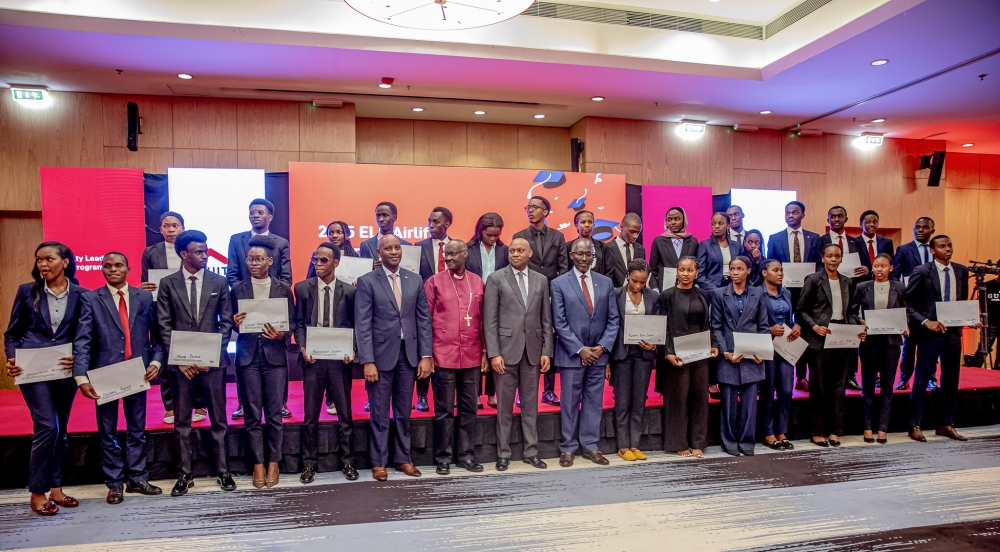Trademark East Africa (TMEA) intends to embark on advocating for the removal of trade barriers and facilitating new projects to amplify the smoothening of doing business as its new priorities, John Bosco Kalisa, the country programmes manager has said.


Trademark East Africa (TMEA) intends to embark on advocating for the removal of trade barriers and facilitating new projects to amplify the smoothening of doing business as its new priorities, John Bosco Kalisa, the country programmes manager has said.The removal of non tariff barriers on northern and central corridors is intended to diminish on transport costs that hinder EAC citizens in landlocked partner states like Rwanda and Uganda."Our main priorities will be financing the construction of One Stop Border Post (OSBP) in order to facilitate the free movement of goods in the region as well as advocating for the elimination of traders to reduce on transport costs,” he said in an interview with the New Times.The construction of the OSBP on Kagitumba-Mirama Hills (Rwanda/Uganda) is yet to commence soon after the completion of a feasibility study.The TMEA official further said that bilateral negotiations to mitigate on all barriers in the transportation of goods among partner states would also be a precedence observing that Rwanda was among the countries suffering the consequences due to its landlocked status."We shall be engaging other countries especially Kenya on bilateral discussions on the congestion delays and inefficiency on the Mombasa port because what we need is free movement of goods in the region,” Kalisa added.Sjoerd Visser, the TMEA director for the OSBP project at the headquarters in Nairobi, Kenya disclosed that the organisation is investing US$75M in the construction of seven border posts in the region. "TMEA is investing around $75m in seven one stop border posts (OSBPs) across the region starting with the Northern Corridor where we are providing financing for the Busia-Busia (Kenya/Uganda) and Kagitumba-Mirama Hills (Rwanda/Uganda) border crossing.” Visser said the organisation would finance the construction of the Taveta-Holili (Kenya-Tanzania), Mutukula-Mutukula (Tanzania/Uganda), Kobero-Kabanga (Burundi/Tanzania) Tunduma (Tanzania/Zambia) and Elegu/ Nimule (Uganda/South Sudan) border crossings across East Africa.Visser however pointed out that in order to make the border posts operate more efficiently, it is crucial that investments are made in implementing Integrated Border Management (IBM)."The mention of the integrated border management often conjures up an image of complex information technology systems complete with sophisticated software to manage borders,” said the director adding that what integrated border management really means, on the other hand, is the process employed to get all border agencies to work together."To do this requires getting these agencies involved in the implementation of the one stop border post that includes the design and construction phase as well as in the implementation or operationalisation phase.”Visser further explained that implementation of integrated border management involves establishing the clearance processes that need to be followed and deciding if the sequencing of these processes can be re-engineered to increase efficiency at borders.It also involves sharing of border resources by the partner states that could include but not limited to inspection and verification sheds to foster a work culture of information sharing and cooperation among border agencies as well as between border agencies from adjoining countries.Visser added that to ensure success, IBM must operate under legal, regulatory and institutional frameworks to allow interagency and bilateral cooperation at borders.However, it is neither a complex concept nor an unattainable one. IBM can be implemented with or without new infrastructure although new infrastructure significantly improves traffic flow management, which is at the fulcrum of the OSBP concept.The director promised that TMEA will continue to prioritise integrated border management as the overarching concept guiding the implementation of One Stop Border Posts to support EAC Partner States’ efforts to boost economic growth in the region by ensuring faster clearance at border crossings and ultimately a reduction of transport time and costs.




